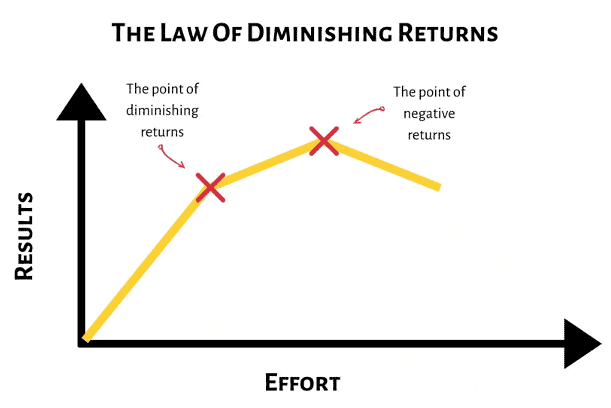

Why Smart Consumers Are Ditching The Myth Of ‘No Pain No Gain’
Share this article:
The “no pain no gain” myth has been circulating in the wellness industry for decades. It became popular in the 1980s as one of Jane Fonda’s favorite aerobics catchphrases1, and it’s been causing harm ever since.
“No pain no gain” is the idea that you get greater rewards by engaging in hard or painful work. Another way to express the same sentiment is “go hard or go home,” but I like to refer to it as the “punishment mentality.”
Pain Isn’t the Path to Wellness
It isn’t sustainable or effective to punish your body in the name of health. Strict diets, harsh workouts, or cringe-worthy massages may elicit short-term change. But the damage it does to the body is a risk that should make us think twice.
Science has proven that low-intensity activities produce significant health improvements2. Yet our culture continues to embrace the concept. Here are two reasons why.
Two Reasons We Still Embrace The ‘No Pain No Gain’ Idea
The first reason is that our culture idolizes high-level athletes. Athletes push their bodies to the limit in the hopes of dominating their sport. While the end may justify the means for this group of people, the body is in danger of damage or disability.
Most of us aren’t professional athletes. We are trying to stay well and feel good for as long as possible. This idea of pushing our bodies beyond comfort and safety should be re-examined.
The second reason is that many people believe that if a little is good, then more must be better. Have you heard of the Law of Diminishing Returns? It states that there is a point where effort no longer produces the same benefit. There even comes a time when continued effort produces negative returns.

Water is a perfect example of this – too little water leads to dehydration, but too much water leads to drowning. There is a point when you can have too much of a good thing.
It’s time that we toss out the concept of inducing pain in the name of health. Long-term wellness comes in the form of respecting the body and listening to science. Let’s explore what this looks like in real life.
Smart Movement
We know that movement is good for your body. So, if you want to get healthier, going for a run may sound like a good idea since that’s what the athletes do. But, a run might make your knees hurt or cause muscle pain that leads you to avoid another run like the plague.
What if you committed to going for a walk after dinner every day? The intensity isn’t as high as running, but the benefits to your body are still significant. Your heart, lungs, and muscles are still working. Plus, you are controlling your blood sugar and boosting “feel good” hormones in your brain. If you make that a regular habit for the rest of your life, the benefits will far outlast the occasional run.
Smart Stress Relief
Something else good for your body is managing stress. Massage is an effective way to relieve stress. Yet, it’s commonplace in my line of work to hear someone say they need a deep tissue massage and nothing else will do. This may be true for some people, but it’s risky to assume that if a gentle massage is good, a deep tissue massage is better.
There is a growing movement to incorporate mechanical massage chairs at home and work. When looking at their options, people think they want a chair that has deep tissue capabilities. This is because they’ve heard that deep tissue is better. But, that’s not necessarily the case. If you don’t love strong massage, don’t feel like you have to endure the pain of deep tissue sessions to benefit.
There are so many good things happening inside your body with gentle massage. For example, compression therapy helps move lymphatic fluid. Soft tissue manipulation hydrates the fascia and muscles. Zero-gravity body positioning taps into the parasympathetic nervous system.
If you love strong massages, then it’s important to find a company that understands how to do it right. Strong massages in a mechanical chair pose a higher risk of real damage to the spine, joints, or muscles. So pay extra attention to how credible the mechanism and massage choreography are.
Smart Eating
The last health habit I will touch on is eating. Diet is a four-letter word in my book. There is no award for enduring the most restrictive, painful diet, yet people tend to act like there is. Eliminating entire food groups and starving yourself, for the sake of a lower number on the scale, is far from healthy.
Instead of embarking on the next fad diet, try making a game of how many superfoods you can get into your meals each day. By filling up on the good stuff, the unhealthy foods will naturally crowd out. Cravings will go away, willpower will be a non-issue, and your energy will spike.
What you eat, how you move, and the way you manage stress should be nourishing, sustainable, and ENJOYABLE for a lifetime. No pain, tons of gain.
References:
- Wikipedia.org: No pain, no gain .
- Annals of Internal Medicine: Patterns of Sedentary Behavior and Mortality in U.S. Middle-Aged and Older Adults
- Ivestopedia: Law of Diminishing Marginal Returns
- The Diminishing Returns – Dilemmas IV
- World’s Best Massage Chairs:
- Stevyn Guinnip: TAKE THE LEAP TO A HEALTHIER OFFICE



